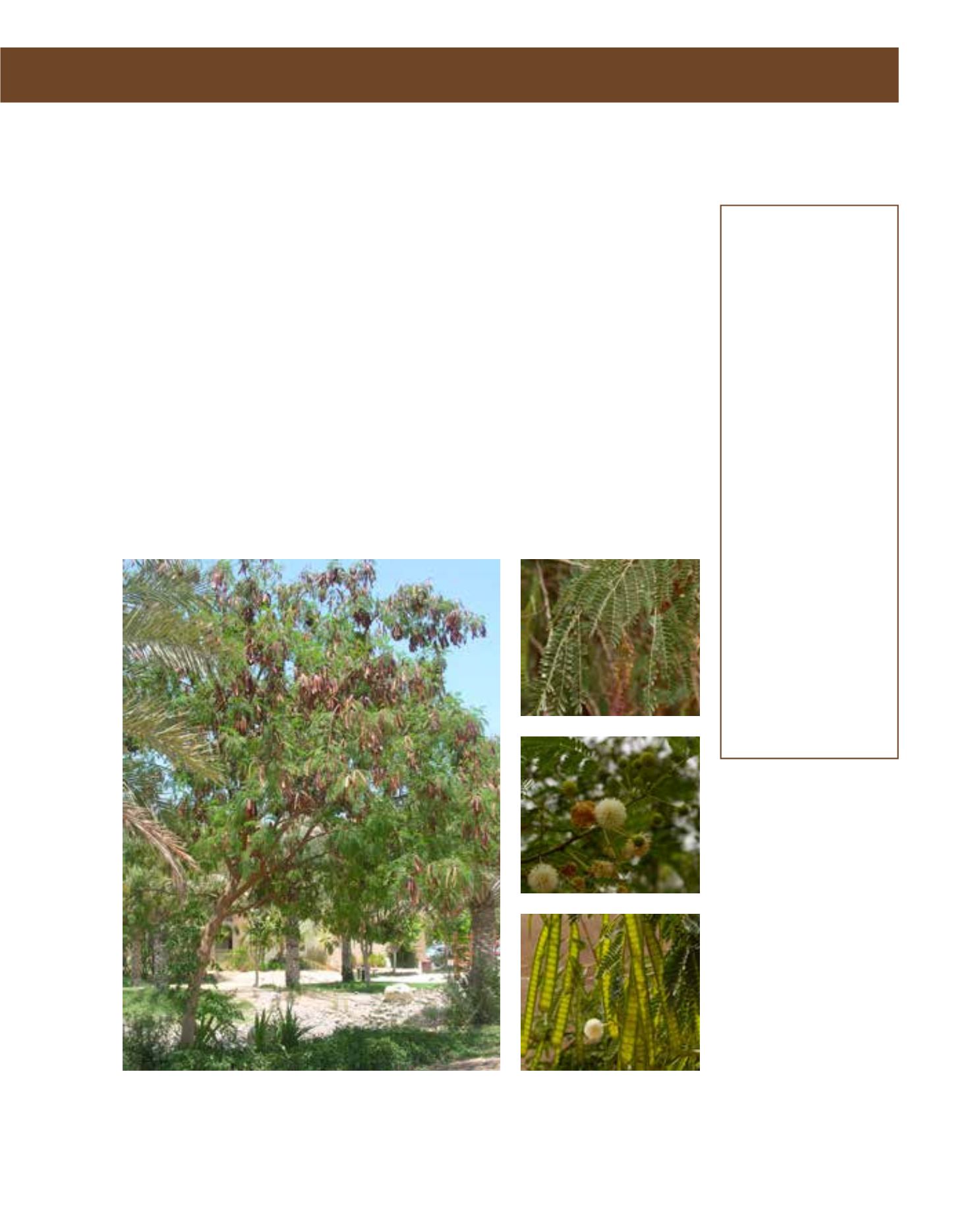

GENERAL
Origin
:
sub-tropical,
tropical
Vigour
:
fairly fast
growing
Humidity
:
very arid, semi-
arid, semi-humid,
very humid
Propagation :
sowing and
pricking out
Maintenance :
moderate
CONDITIONS
Urban climate :
resistant
Dessication :
resistant
Stagnant water :
vulnerable
Irrigation
:
low
Salinity/ppm :
moderate (3000
ppm)
Hardiness
:
-3°C
SHAPE
Type
:
tree
Height
:
4 m-10 m
Spread
:
4 m-7 m
Foliage
:
deciduous
FLOWER
Colour
:
light yellow
Size
:
2 cm - 3 cm
Period
:
April - December
FRUIT
Type of fruit :
pod
Fruit size
:
19 cm
Toxicity
:
inedible
This is fast-growing tree, native to tropical America, which has become naturalised on all con-
tinents. In Arriyadh, too, it is now relatively common. Basically a weed, the habitats of which
are watercourses, disturbed sites and often agricultural land, the Horse Tamarind is a small tree
up to 10 metres tall with a slender trunk and rough, brown bark. It creates dense stands where
conditions are favourable. The leaves are bright green, bipinnate and fine; the numerous white
flowers, on long stalks, are like pin-cushions in spiky clusters. Trees are usually covered with the
long, brown fruit pods, which can create a lot of litter and produce a multitude of seedlings. It is
not frost-hardy and grows on most soils, though poorly on acid soil. It tolerates drought well, but
needs irrigation until established. Trees are propagated by seed, which need scarification as well
as cuttings. L. leucocephala responds well to fertiliser and soil liming. It is susceptible to insect
infestations. At the end of the last century (CE), its use was heavily promoted as a shade plant on
agricultural plantations, in land reclamation, erosion control, water conservation, reforestation
and soil improvement programs. It is also used as a green manure crop (nitrogen fixation), for
windbreaks and firebreaks. The Horse Tamarind requires more maintenance than is usual for
an arid region plant, including regular grooming to improve its appearance, pruning after frost
damage and weeding to remove unwanted seedlings. It should be used sparingly.
190
Leucaena leucocephala,
Mimosaceae
Horse Tamarind,
Wild Tamarind
















